WW1 Photos: Harper's Pictorial Library of the World War, Volume 2 - 1920
Photographs and Other Images Sourced from Harper's Pictorial Library of the World War, Volume 2: How the War was Lost and Won - The Grand Strategy of the High Commands, 1920. A part of a World War 1 Online Exhibit at the GG Archives.
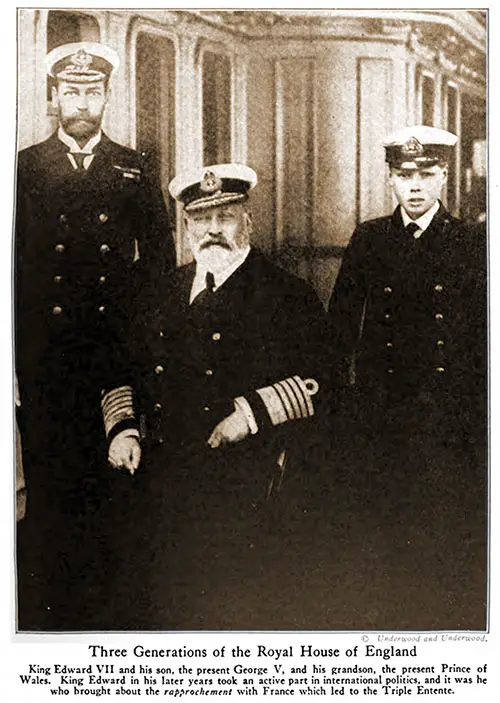
Three Generations of the Royal House of England. King Edward VII and His Son, the Present George V, and His Grandson, the Present Prince of Wales. King Edward in His Later Years Took an Active Part in International Politics, and It Was He Who Brought About the Rapprochement With France Which Led to the Triple Entente. Photograph © Underwood & Underwood. Harper's Pictorial Library of the World War, Volume 2, 1920. GGA Image ID # 18c17a4ab9
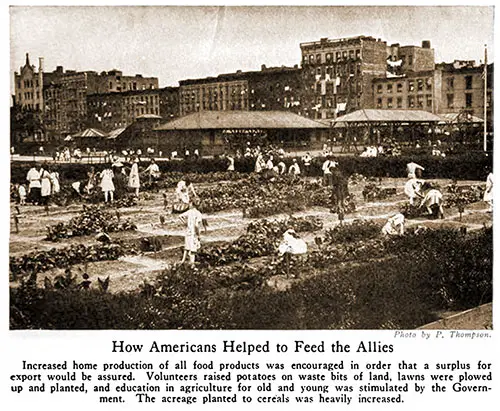
How Americans Helped Feed the Allies. Increased Home Production of All Food Products Was Encouraged so that the United States Would assure a Surplus for Export. Volunteers Raised Potatoes on Waste Bits of Land, Lawns Were Plowed up and Planted, and Education in Agriculture for Old and Young Was Stimulated by the Government. The United States Also Heavily increased the Acreage Planted to Cereals. Photograph by Paul Thompson. Harper's Pictorial Library of the World War, Volume 2, 1920. GGA Image ID # 18c1ed8a66
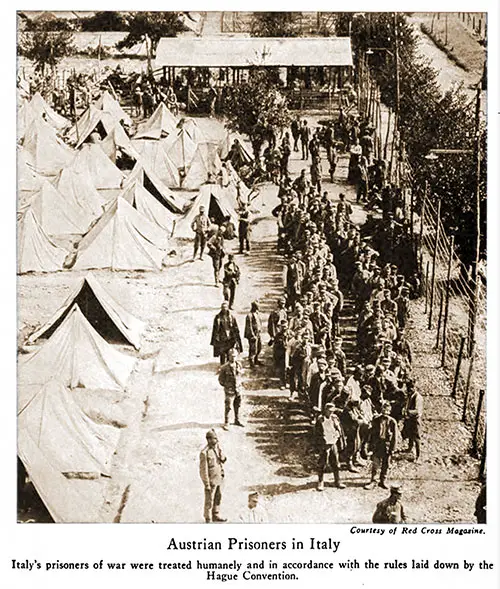
Austrian Prisoners in Italy. Italy’s Prisoners of War Were Treated Humanely and under the Rules Laid Down by the Hague Convention. Photograph Courtesy of Red Cross Magazine. Harper's Pictorial Library of the World War, Volume 2, 1920. Harper's Pictorial Library of the World War, Volume 2, 1920. GGA Image ID # 18c2295426
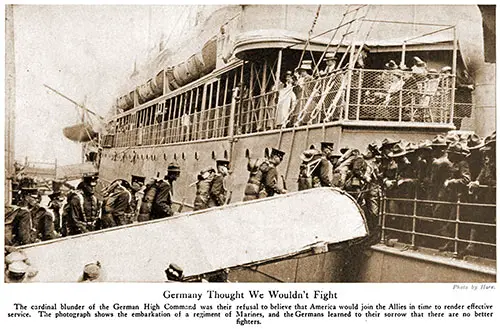
Germany Thought We Wouldn't Fight. The Cardinal Blunder of the German High Command Was Their Refusal to Believe That America Would Join the Allies in Time to Render Effective Service. The Photograph Shows the Embarkation of a Regiment of Marines, and the Germans Learned to Their Sorrow That There Are No Better Fighters. Photograph by Hare. Harper's Pictorial Library of the World War, Volume 2, 1920. GGA Image ID # 18c29f6278
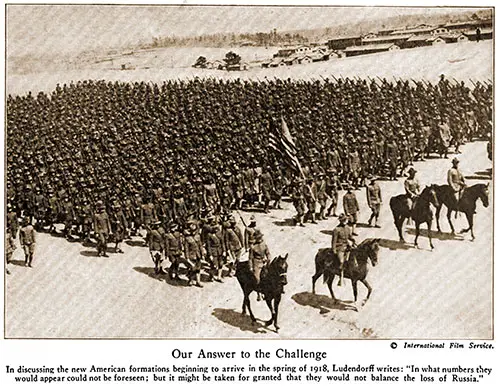
Our Answer to the Challenge. in Discussing the New American Formations Beginning to Arrive in the Spring of 1918, Ludendorff Writes: “in What Numbers They Would Appear Could Not Be Foreseen ; But It Might Be Taken for Granted That They Would Not Balance the Loss of Russia.“ Photograph © International Film Service. Harper's Pictorial Library of the World War, Volume 2, 1920. GGA Image ID # 18c2f537be
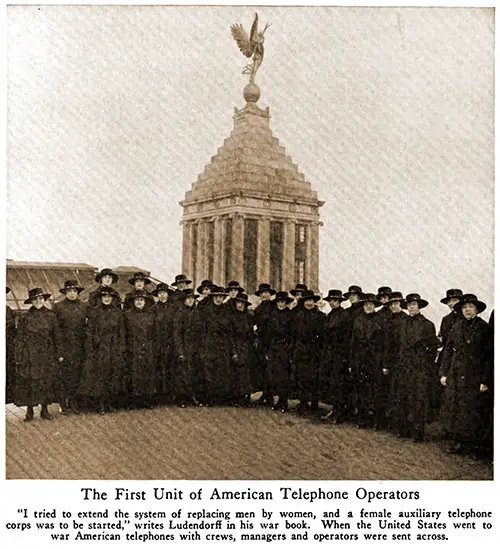
The First Unit of American Telephone Operators. “I Tried to Extend the System of Replacing Men by Women, and a Female Auxiliary Telephone Corps Was to Be Started,” Writes Ludendorff in His War Book. When the United States Went to War, American Telephones With Crews, Managers, and Operators Were Sent Across. Harper's Pictorial Library of the World War, Volume 2, 1920. GGA Image ID # 18c2fdbc1e
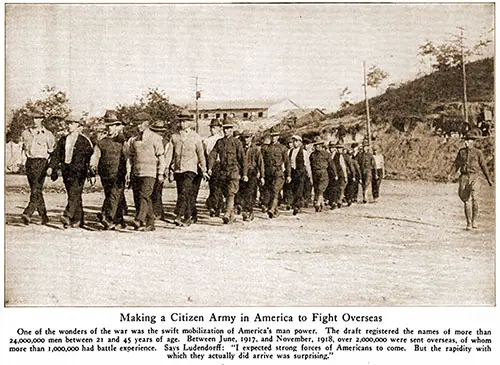
Making a Citizen Army in America to Fight Overseas. One of the Wonders of the War Was the Swift Mobilization of America's Man Power. The Draft Registered the Names of More Than 24,000,000 Men Between 21 and 45 Years of Age. Between June 1917 and November 1918, Over 2,000,000 Were Sent Overseas, of Whom More Than 1,000,000 Had Battle Experience. Says Ludendorff: "I Expected Strong Forces of Americans to Come. but the Rapidity With Which They Actually Did Arrive Was Surprising." Harper's Pictorial Library of the World War, Volume 2, 1920. GGA Image ID # 18c3bffd9d
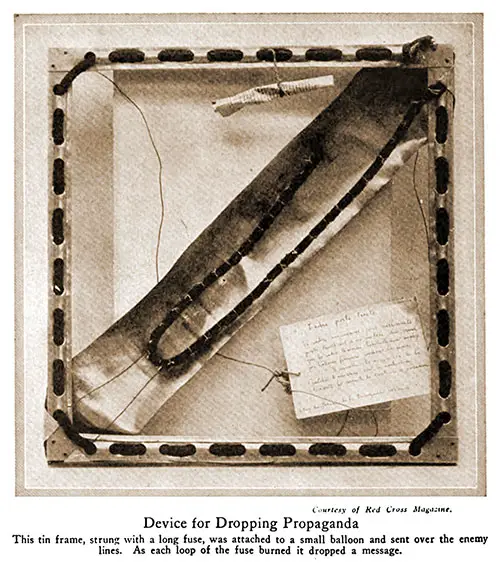
Device for Dropping Propaganda. This Tin Frame, Strung With a Long Fuse, Was Attached to a Small Balloon and Sent Over the Enemy Lines. as Each Loop of the Fuse Burned It Dropped a Message. Photograph Courtesy of Red Cross Magazine. Harper's Pictorial Library of the World War, Volume 2, 1920. GGA Image ID # 18c3e3c132
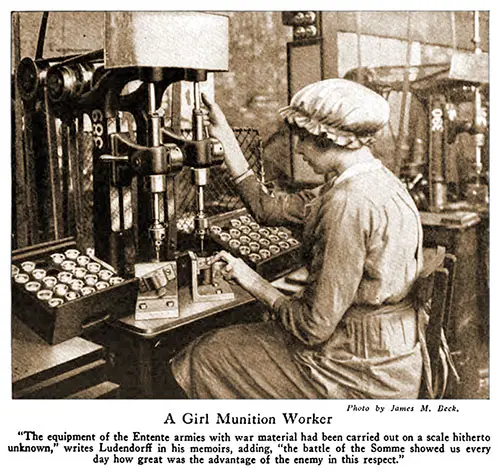
A Girl Munition Worker. “The Equipment of the Entente Armies With War Material Had Been Carried Out on a Scale Hitherto Unknown,’ Writes Ludendorff in His Memoirs, Adding, “the Battle of the Somme Showed Us Every Day How Great Was the Advantage of the Enemy in This Respect.” Photograph by James M. Deck. Harper's Pictorial Library of the World War, Volume 2, 1920. GGA Image ID # 18c4329f2a
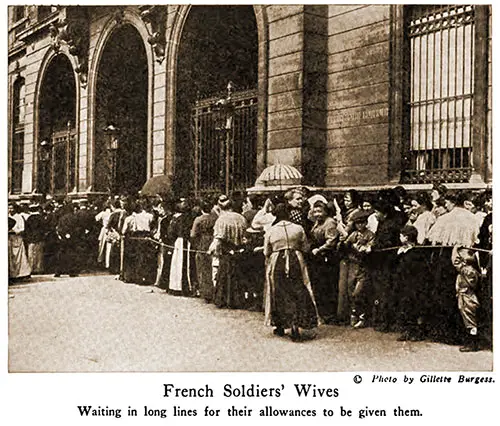
French Soldiers’ Wives Waiting in Long Lines for Their Allowances to Be Given Them. Photograph © Gillette Burgess. Harper's Pictorial Library of the World War, Volume 2, 1920. GGA Image ID # 18c44581f6
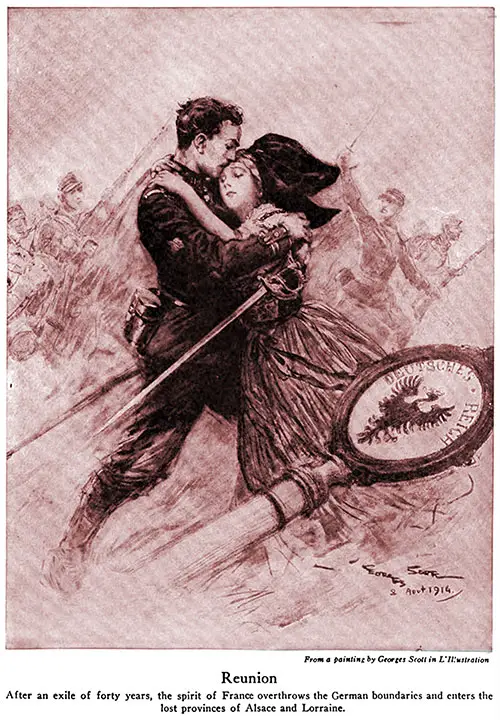
"Reunion" After an Exile of Forty Years, the Spirit of France Overthrows the German Boundaries and Enters the Lost Provinces of Alsace and Lorraine. From a Painting by Georges Scott in L'Illustration. Harper's Pictorial Library of the World War, Volume 2, 1920. GGA Image ID # 18c507b376
Captain J. B. W. Gardiner, Ed., and Thomas Y. Ybarra, Ed., Harper's Pictorial Library of the World War In Twelve Volumes Profusely Illustrated, Volume II: How the War was Lost and Won -- The Grand Strategy of the High Command, New York-London: Harper & Brothers, 1920. Foreword by Charles W. Eliot, Ph.D., Introduction by General Sir Frederick Maurice.
